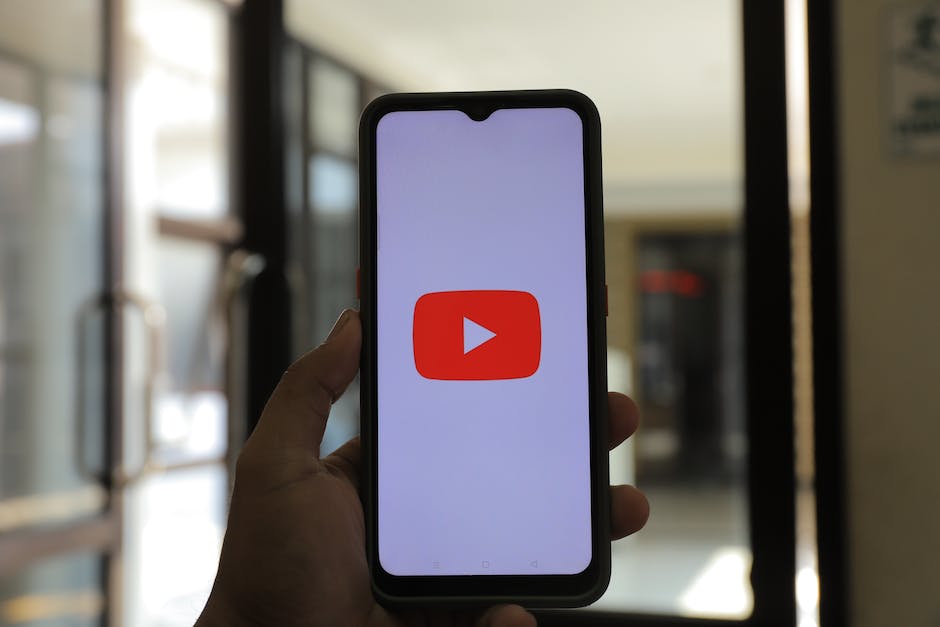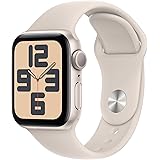BetterYouJourney.com is a participant in the Amazon Services LLC Some of the links in our posts are affiliate links. Click here to see full Disclosure.
In the digital era we live in, an array of opportunities have emerged that provide various forms of income; one such platform is YouTube. Equipped with the right knowledge and tools, transforming a YouTube channel into a profitable enterprise can be an attainable reality, no matter the genre of content you produce. This body of text delves into mechanisms through which one can accomplish this, starting with understanding the workings of the YouTube Partnership Program, a strategic initiative that facilitates monetization through ads, merchandise, and channel memberships. Additionally, we dive into affiliate marketing, a smart way to generate income by recommending products within your videos. Lastly, we will discuss how you can transform your channel’s brand into sellable merchandise and how to attract sponsors for your content on YouTube.
Understanding YouTube Partnership program
Understanding the YouTube Partnership Program
The YouTube Partnership Program, or YPP, is a program offered by YouTube that allows content creators to monetize their channels. The program includes a variety of methods for earning money, including advertisements, channel memberships, merchandise sales, and even Super Chat.
To qualify for the YPP, a channel must meet certain eligibility requirements set by YouTube. These include having at least 1,000 subscribers, having at least 4,000 watch hours in the last 12 months, upholding the platform’s community guidelines and advertiser-friendly content guidelines, and having a linked AdSense account.
Earning Money through Advertisements
One of the ways that creators can earn money on YouTube is through ads. There are several types of ads that can appear on YouTube videos, including display ads, overlay ads, skippable video ads, non-skippable video ads, and sponsored cards.
The revenue from ads is shared between YouTube and the creator, with the creator typically earning 55% of the revenue and YouTube keeping 45%. Ad revenue can vary greatly depending on the popularity of the videos, the number of views, and the viewer demographic.
Channel Memberships and Super Chat
In addition to ads, YouTube also allows creators to earn money through features like channel memberships and Super Chat.
Channel memberships allow viewers to pay a monthly fee to access exclusive badges, emojis, and other perks. This provides a steady stream of income for creators and can make viewers feel more connected to the channel.
Super Chat, on the other hand, is a feature that allows viewers to pay to have their comments highlighted during live chats. This can be a great way for creators to earn money during live streams, particularly during popular events or discussions.
Merchandise Sales
Finally, the YouTube Partnership Program also provides an opportunity for creators to sell merchandise directly from their channel. This can be a significant source of income, particularly for creators with a highly engaged fan base.
In order to sell merchandise on YouTube, creators must partner with one of YouTube’s approved merchandise sites. Once this is done, creators can showcase their merchandise on a “merch shelf” directly below their videos.
To utilize this feature, a channel must have at least 10,000 subscribers. However, for channels that meet this milestone, selling merchandise can be an excellent way to monetize their content while also providing value and entertainment to their viewers.
In conclusion
The YouTube Partnership Program offers several ways for creators to make money, from ads and memberships to Super Chat features and merchandise sales. By utilizing these features, creators can turn their passion for video creation into a profitable enterprise.

Learning about Affiliate Marketing
Understanding Affiliate Marketing
Affiliate marketing is a strategy in which you promote products or services for a company. For every purchase made through your specific referral link, you will earn a commission. This commission can range from a small percentage to over 50% of the product’s price, depending on the company’s affiliate program terms. In the case of YouTube, you can use your videos to promote these products and include your affiliate link in the video description.
Joining an Affiliate Program
The first step is to join an affiliate program. There are numerous programs available, including Amazon Associates, Walmart Affiliate Program, and Commission Junction. The requirements and payout for each program can vary, so research each option carefully. Most affiliate programs require you to apply and get approved before you can start promoting their products.
Finding Products to Promote
Once you are part of an affiliate program, you can select products to promote that relate to your YouTube video content. For instance, if you’re a makeup artist on YouTube, you can promote the cosmetics you use in your tutorials. If you run a tech channel, you can recommend the gadgets you review. Make sure that the product you are promoting genuinely benefits your viewers.
Promoting Affiliate Products on Your YouTube Channel
Next, create YouTube videos that include the products you want to promote. You can create specific product reviews, demonstrations, tutorials, or any other type of video where the product is featured. Always be truthful and authentic in your videos to maintain your viewers’ trust.
How to Include Your Affiliate Links
In the video description, include your affiliate link where viewers can purchase the product you’re promoting. It’s important to disclose that this is an affiliate link so that viewers know you will earn a commission from their purchases. This transparency can increase trust with your audience and does not generally deter viewers from using your link.
Engaging Your Audience
Use engaging content to convince viewers to purchase through your links. You can leverage product benefits, personal reviews, and demonstrations to increase the appeal of the product. Additionally, issue a call-to-action inviting viewers to click on your affiliate links in the video description.
Tracking Performance and Improving Strategy
Finally, remember that tracking your performance is essential. Use the analytic tools provided by your affiliate program to track conversions and earnings. This will help you understand what works and what doesn’t, and adjust your strategy accordingly. Constantly learning and improving will increase the revenue you get from affiliate marketing on your YouTube channel.

Selling Merchandise and Products
Understanding Monetization through Selling Merchandise and Products on Youtube
Creating a successful Youtube channel alone can be a source of income. However, adding merchandise and product sales within your Youtube platform can significantly increase your revenue, while also enhancing your platform’s overall brand. Here’s how to do it.
Creating Your Branded Merchandise and Products
First, consider the type of merchandise or products you want to sell. The items should be in line with your channel’s brand and resonate with your audience. The products could be physical goods like t-shirts, mugs, posters, or digital products like eBooks, webinars, or online courses. Collaborate with reputable vendors to create your merchandise or use trusted platforms like Shopify if you’re selling digital products.
Promote Your Merchandise on Your YouTube Channel
Ensure your fans and followers are aware of your products by effectively promoting them on your channel. This can involve showcasing the products in your videos, referencing them in your video descriptions, or including them in your channel’s banner or about section. You can also create a video specifically about your product range, explaining the items, their quality, and how purchasing them supports your channel.
Utilize the Merch Shelf Feature
If your channel is eligible, make use of Youtube’s merchandise shelf feature. This allows eligible creators to showcase their official branded merchandise directly on their Youtube channels. Viewers can see and buy directly from the merchandise shelf under your videos.
Providing Seamless and Secure Transactions
Provide a seamless purchase experience by linking your merchandise or product page directly from your Youtube channel. Ensure the payment process is secure and user-friendly, with multiple payment options available. Also, ensure that your shipping or product delivery is efficient to keep your viewers happy.
Engagement and Feedback
Engage with your audience and ask for feedback about your products. This could be conducted through polls, comments, or direct messages. Feedback can help you improve your products and understand what your audience wants, which in turn can increase sales.
Always remember, consistency and quality are crucial in selling merchandise or products on your Youtube channel. It’s important to ensure your products align with your brand, and your brand is consistently upheld in everything you do. By selling quality products that your audience wants and needs, you can effectively monetize your Youtube channel while creating a stronger brand.

Sponsored Videos and Product Placements
Finding Sponsors for Your Youtube Channel
- Identify your niche: Understand your channel’s content and your target audience. Brands look for channels that align with their products or services. If you run a fitness channel, sportswear brands would be suitable sponsors, for instance.
- Engage your audience: High audience engagement is appealing to potential sponsors. Encourage likes, comments, shares, and subscribers by asking questions, hosting contests, and responding to comments.
- Create a media kit: This kit contains information about you, your channel, your audience demographics, and past collaborations. Brands interested in sponsoring you will likely request this information.
- Reach out to potential sponsors: Email brands directly expressing your interest in a collaboration. Share your media kit and highlight why your channel would be a great fit for their brand.
- Join Influencer platforms: Websites such as GrapeVine, Channel Pages, or Famebit connect influencers with sponsors. Register to get access to a pool of potential sponsors.
Integrating Product Placements
- Stay Authentic: If your audience feels you’re promoting a product just for money, they may not react positively. Ensure that the product fits seamlessly into your content.
- Be Transparent: Let your viewers know when your content includes sponsored products. Not only is transparency valued by viewers, it’s also required by the Federal Trade Commission in the United States.
- Review or Tutorial Videos: If the product or service is something you can use, consider integrating it into a review or tutorial video.
- Promotional Codes: Offering promotional codes not only incentivizes viewers to try the sponsored product, but also allows you and your sponsor to track how successful the placement was.
- Giveaways: Hosting a sponsored giveaway can generate excitement among your viewers while promoting your sponsor’s product.
- Incorporate products into your video in a natural way: For example, you could be seen using a sports drink while working out for a fitness channel, or wearing sponsored clothing or makeup in a fashion or beauty vlog.
Remember to always follow YouTube’s guidelines for paid product placements and endorsements.

As we have discussed, turning your passion into a lucrative business on YouTube involves a variety of strategies; from understanding YouTube’s Partnership Program to building a merchandising brand with your channel, the key to success lies in diversity. Utilizing affiliate marketing adds another layer of income, while sponsored videos and product placements can be a substantial revenue source when negotiated efficiently. With continual learning and adapting, any aspiring YouTube creator can successfully monetize their channel and enhance their brand, opening doors to unlimited opportunities. Remember, capitalizing on these pathways will require not just consistency in content production, but also strategic planning, savvy business decisions and a responsive approach towards your audience.








